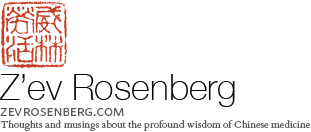Some further thoughts. . . according to Elisabeth, Han physicians of this era basically had a three-fold classification of the human being in terms of clinical gaze:
- the architectural body: left right, up and down, front and back, and the channels/network vessels
- the ecological body: dampness, dry, heat, cold, fluids, blood and:
- the sentimental body: Chunyu Yi saw the viscera as repositories of qi and emotions, and emotions were the major internal cause of health or disease, G-d forbid.
I was reading in Unschuld’s Suwen today, chapter 77 (Discourse on Expounding the Five Faults): “Whenever one wishes to diagnose a disease, it is essential to inquire about whether he has (the patient) experienced violent joy or suffering, or an initial joy followed by suffering. All this harms the essence qi. When the essence qi is exhausted and its flow interrupted, the physical body will be destroyed.”
About this Wang Bing says “the blood is boiled by anxiety; qi decreases in accordance with sadness. The defense qi is diminished in the exterior, while the construction qi is removed from the inner segments.”
And: “Separation and interruption, dense compactness and knotting, anxiety, fear, joy and anger, (whether they let) the five depots (viscera) be empty and depleted and (whethter they let) blood and qi lose their guardian function, if the practitioner fails to know this, what art (of medicine) is there to speak of?”
So our medical tradition clearly and coherently explains how changes in status (“wealthy first and poor later, of noble rank and stripped of power”) and violent emotions damages human health, and also how to treat this. We ignore this at our peril. . .
In my opinion, our first duty to our patients is not to learn protocols for symptoms, but to clearly see what made them ill in the first place and try to help them heal from within, if possible. And for that we need to study such source materials.


Great post Zev: As you know, I agree strongly that emotions are now, too, the major internal cause of health or disease.